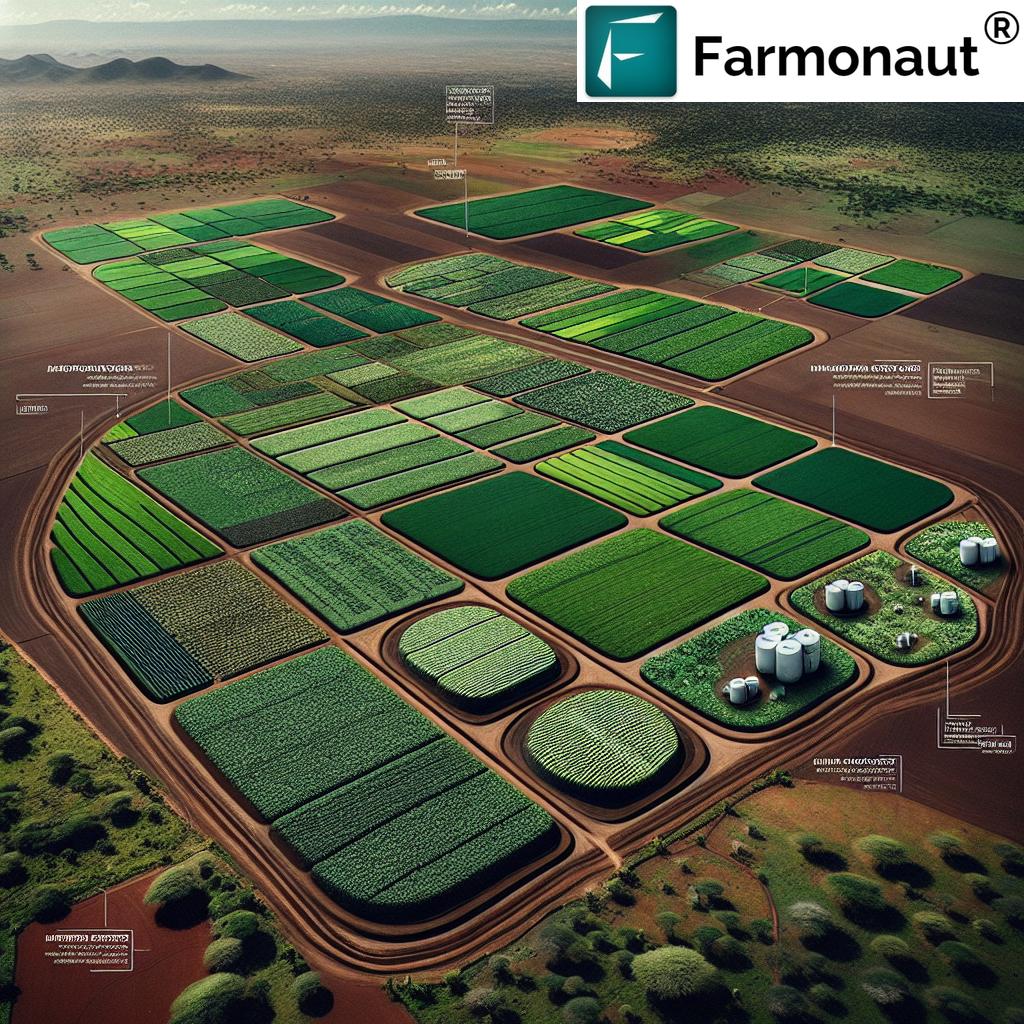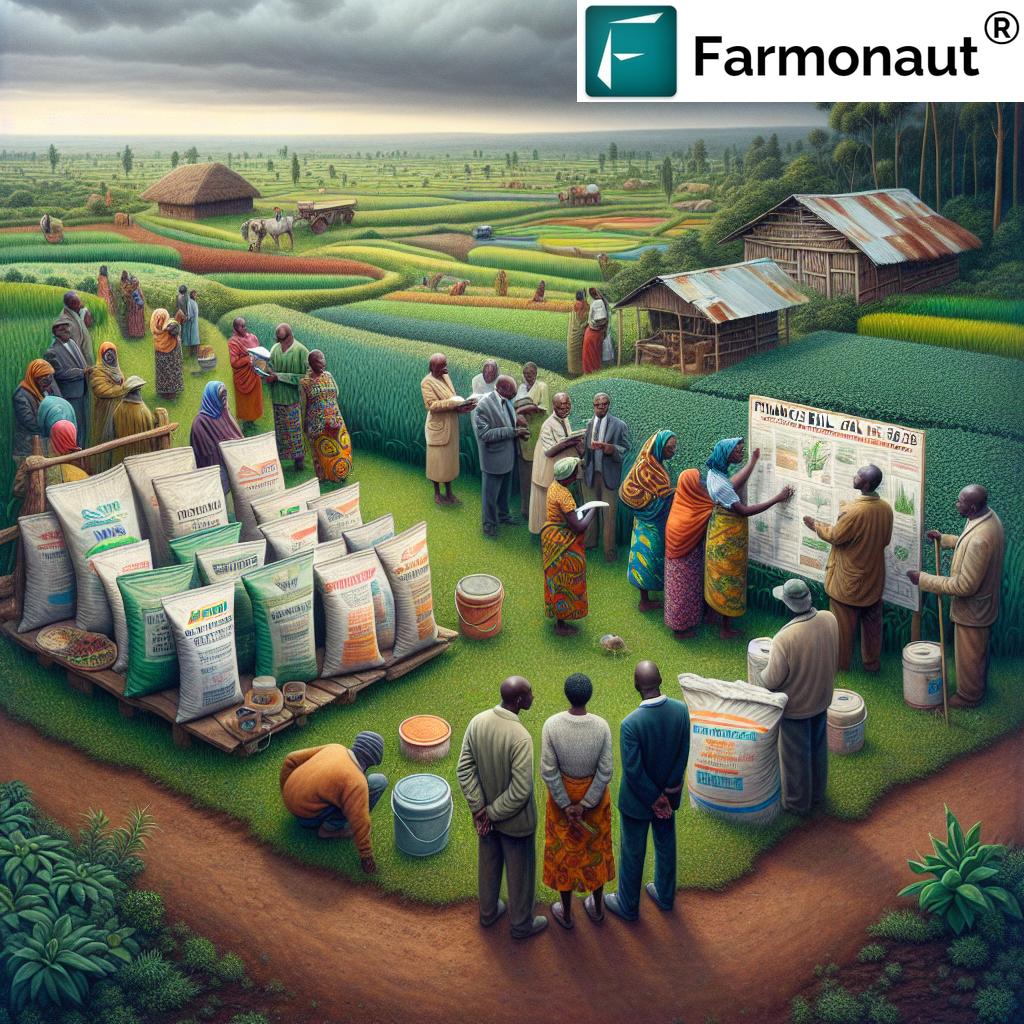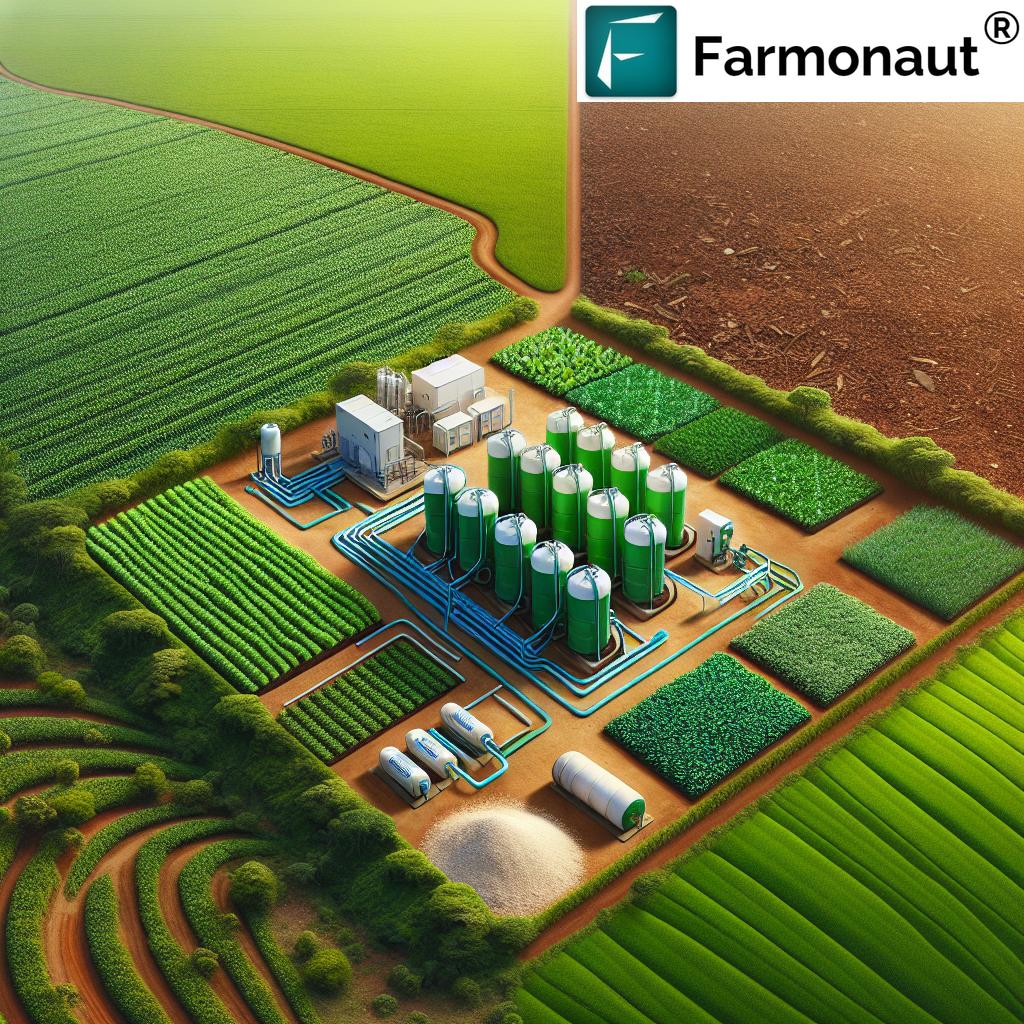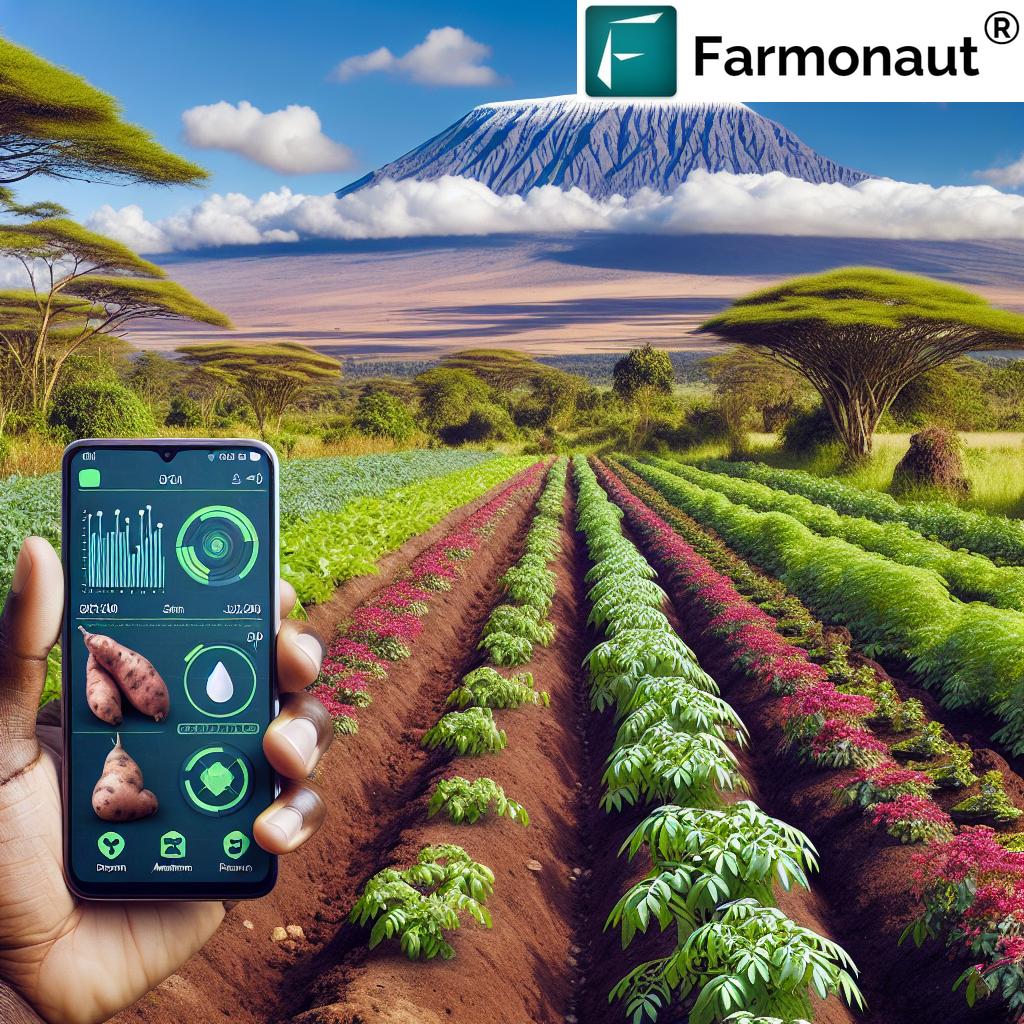Organic Fertilizer Africa: 5 Ways to Boost Soil & Food
Introduction: The Urgent Need for Organic Fertilizer Africa
Africa stands at an environmental crossroads. Over 300 million hectares of arable land stretch across the continent, fertile yet increasingly threatened by climate change, depleted soil, unsustainable use of chemical fertilizers, and skyrocketing food and fertilizer imports. With more than 20% of the African population facing hunger and up to 60% of soils suffering from degradation, investing in sustainable soil resilience solutions is imperative for Africa’s future.
Our mission as stakeholders in African agriculture is to promote sustainable, scalable agricultural solutions. At the heart of this mission is the shift from imported chemical fertilizers towards modular, locally produced organic fertilizer Africa systems—innovations capable of reclaiming soil health, reducing hunger, and revolutionizing food production through environmental stewardship.
Digital Utilities & Modular Fertilizer Solutions in Africa
Let’s spotlight a breakthrough: Digital Utilities Ventures, Inc. (Easy Environmental Solutions Inc.) has initiated a game-changing step by deploying modular EasyFEN™ units in Africa. These units—built for the African context—transform locally sourced waste and biomass into potent liquid microbial fertilizer for crops, specifically Terreplenish, to fertilize more than 1 million acres per unit annually. The result? Over 16 million people can potentially be fed using fertilizer produced in one year from a single modular unit, dramatically reducing soil degradation, chemical fertilizer imports, and production costs by up to 66%.
With EasyFEN™ units now in the manufacturing and delivery pipeline, and organic liquid microbial fields already in trial in Somalia and the Congo, Africa leads as a global example for scalable agricultural solutions. It’s this model of localized, modular production that will drive the future of sustainable food security across other countries in the continent.
Why Organic Fertilizer Africa? Key Benefits & Environmental Impact
Conventional, chemical-based fertilizers—often imported—are not only expensive for African farmers but also erosive over the long-term, both financially and environmentally. In contrast, scalable, organically sourced alternatives deliver multifaceted benefits:
- Soil Restoration: Organic fertilizer Africa amends soil, increasing organic matter, retaining nutrients, and rebuilding healthy microbiota essential for root health and food crop resilience.
- Cost Reduction: Modular fertilizer unit operations can cut input costs by over 2/3 compared to imported chemicals, providing massive financial relief for African farmers.
- Resource Efficiency: Microbial fertilizer for crops like Terreplenish releases nutrients over an extended period, reducing fertilizer use and cutting irrigation or rainfall requirements by up to 20%.
- Emission Reduction: Organic fertilizer produced from waste eliminates the greenhouse gases associated with freight and production of conventional chemicals, supporting Africa’s climate goals.
- Increased Food Security: By converting local waste into a renewable fertilizer that can support millions of acres, these scalable agricultural solutions directly fight food shortages and hunger.
Restoring Soil Health: Top 5 Ways with Scalable Solutions
We now turn to the five most impactful, field-tested technologies and methods for producing and deploying organic fertilizer Africa-wide. Each strategy has been developed or refined for Africa’s diverse farming environments, supporting soil restoration and drought-resistant farming Africa needs.
1. Modular Liquid Microbial Fertilizer Units (e.g., EasyFEN™)
- How It Works: These fully automated modular fertilizer units convert up to 17,000 tons of biomass, crop residues, and food scraps into over 2 million gallons of liquid microbial fertilizer annually.
- Impact: Generates enough fertilizer to treat over 400,000 hectares per unit annually—and is flexible for deployment in both major fields and remote villages, making it an ideal scalable agricultural solution.
- Environmental Benefits: Reduces greenhouse gases, rebuilds soil with a living microbial inoculant, and drastically slashes chemical imports.
2. Composting Bioreactors
- How It Works: Controlled, modular composting methods utilizing agricultural waste, animal manures, and green plant biomass to create nutrient-rich organic fertilizer from waste with robust microbial diversity.
- Impact: Improves soil organic carbon and microbial content, boosting field water retention and overall fertility.
- Scalability: Suitable for both smallholders and larger farming enterprises—can be adopted at community or cooperative scale.
3. Anaerobic Digesters for Biogas & Liquid Digestate
- How It Works: Converts organic wastes (livestock manure, food waste, crop residues) into biogas for energy and a nutrient-dense liquid digestate, used as organic fertilizer across acres of farmland.
- Soil & Crop Impact: Delivers slow-release nutrients and living microbes, enhancing nitrogen content and long-term soil stability.
4. Vermiculture (Worm-Based Fertilizer)
- How It Works: Agricultural waste is processed by earthworms to yield vermicompost, which improves soil structure, enhances nutrient bioavailability, and adds beneficial soil microbes.
- Best Suited For: Small farms, cooperative gardens, and peri-urban fields where intensive fertilizer imports are unsustainable.
5. Integrated Green Manure & Cover Cropping Techniques
- How It Works: Planting leguminous or fast-growing nitrogen-fixing crops and incorporating them into the soil to enrich organic matter and microbial biomass.
- Farmland Impact: Increases resilience, boosts soil nitrogen and phosphorus, and breaks cycles of starvation by sustainably feeding both soil and people.
Collectively, these five organic fertilizer Africa methods foster soil restoration, reduce fertilizer imports, and make sustainable food production Africa’s new reality.
Comparative Table: 5 Organic Fertilizer Methods Impact
| Method | Waste Input Type | Microbial Composition | Soil Health Impact (Est. % Improvement) |
Crop Yield Increase (Est. %) |
Scalability Rating | Key Environmental Benefits |
|---|---|---|---|---|---|---|
| Modular Liquid Microbial Fertilizer Unit (EasyFEN™) | Green biomass, crop residues, food waste | Diverse proprietary inoculant (Terreplenish), high in beneficial bacteria/fungi | 45–60% | 35–50% | High | Slashes fertilizer imports, cuts GHG emissions, rebuilds soil, conserves water |
| Composting Bioreactors | Crop waste, livestock manure, green vegetation | Rich in saprophytic organisms, actinomycetes, fungi | 30–40% | 25–35% | Medium/High | Reuses waste, increases carbon content, reduces landfill |
| Anaerobic Digesters | Animal waste, food residues, crop by-products | Anaerobic bacteria; enhanced with post-processing | 25–35% | 20–30% | Medium | Targets nutrient cycling, energy recovery, water conservation |
| Vermiculture | Organics, kitchen scraps, plant trimmings | High microbial diversity (bacteria, fungi, protozoa via worm casts) | 30–50% | 15–25% | Low/Medium | Improves soil structure, minimal emissions, local scale |
| Green Manure & Cover Cropping | Legumes, grasses, fast-growing biofixers | Rhizobia and associative bacteria (nitrogen-fixers) | 20–30% | 10–18% | High | Reduces erosion, boosts biodiversity, closes nutrient cycles |
As the table shows, modular liquid microbial fertilizer units stand out in scalability, cost-effectiveness, and environmental impact, making them central to Africa’s organic fertilizer transformation.
Boosting Food Resilience: Microbial Fertilizer for Crops
To meet the needs of the fastest-growing populations and undernourished communities, Africa needs more than just fertilizer—it needs drought-resistant farming Africa and the restoration of field soils’ natural fertility using microbial fertilizer for crops.
Microbial fertilizers like Terreplenish, produced through scalable modular solutions, do more than just feed plants. They rebuild soil microbiology, enhance soil carbon, increase water retention, and protect against disease—all while reducing dependence on nonrenewable chemical inputs. These organic, liquid microbial fertilizers (2 gallons deliver 45–60 pounds of nitrogen and 15–20 pounds of phosphorus per acre) increase yields across diverse crops by making nutrients more bioavailable and improving the soil’s drought resilience.
From Waste to Fertilizer: Sustainable Food Production Africa
Africa has huge untapped potential to produce organic fertilizer from waste. Thanks to scalable, modular fertilizer units, we can transform food scraps, crop residues, and green biomass—once considered waste—into nutrient-dense, locally available liquid microbial fertilizer.
- Production Impact: Each (EasyFEN™) modular unit can process up to 17,000 tons of organic waste annually.
- Environmental Advantages: This approach protects ecosystems by diverting agricultural waste from burning or landfill and gives African countries’ food systems a path to circular, regenerative agriculture.
- Food Security: University studies estimate that one unit annually produces enough liquid inoculant to fertilize more than 1 million acres, potentially feeding over 16 million people each year through sustainable food production Africa.
The Role of Technology in Organic Fertilizer Africa
Just as innovative manufacturing and digital utilities drive modular fertilizer unit success, advanced agricultural technology is essential for maximizing the benefits of organic fertilizer Africa. Precision agriculture platforms empower farmers, agribusinesses, and policymakers to use, monitor, and optimize adoption of scalable agricultural solutions.
For instance, platforms like Farmonaut integrate technologies including satellite-based crop health monitoring, AI-driven advisory systems, and blockchain for traceability to enable rapid, field-level decision support. By combining real-time data with soil and crop analytics, African farmers can make evidence-based decisions that optimize fertilizer application, conserve water, and scale up resilience—without overreliance on chemical imports or expensive field trials.
Digital Agriculture for Soil and Food Resilience in Africa
- Satellite Crop Health Monitoring: Farmonaut’s platform provides NDVI and soil moisture mapping, enabling smart scheduling for modular fertilizer application—boosting both soil restoration and yield improvement.
- Jeevn AI Advisory: AI-driven, real-time farm advice based on location-specific weather, soil, and vegetation data helps optimize fertilizer use and pest control per crop and field.
- Blockchain Traceability: Food companies, governments, and supply chains can prove the sustainability and organic quality of their African produce using transparent digital tracking (learn more about traceability).
By scaling up digital utilities across the continent’s operations, we accelerate Africa’s transition to a self-sufficient, hunger- and emission-free future.
Precision Agriculture Tools for Crop, Soil & Farm Management
Scalable organic fertilizer Africa solutions are only as effective as the precision with which they’re applied. Digital farm management tools let us fine-tune these applications down to the acre, ensuring every drop of organic liquid microbial fertilizer is maximally effective.
- Crop Health Monitoring: Satellite imagery and remote sensing tools help spot nutrient deficiencies and drought stress, allowing for targeted supplemental inoculant or irrigation (learn about large-scale farm management).
- Carbon Footprinting: Monitoring the environmental outcomes of fertilizer use helps Africa align with international sustainability standards and unlock new green finance options (carbon footprinting benefits explained).
- Supply Chain Digitalization: Blockchain ensures organic certification of Africa’s field-to-fork supply, adding value and trust to exports and local food systems.
Additionally, resource tracking and fleet management tools, such as those offered by Farmonaut’s web and mobile apps (fleet management details here), help optimize fertilizer logistics for cooperatives and government operations.
Farmonaut Platform: Real-Time Monitoring & Advisory Systems
Our transition to sustainable agricultural inputs is supercharged by data-driven farm management. Farmonaut’s affordable subscription services—powered by satellite imagery, AI, and blockchain—bring field-level monitoring, farm advisory, product traceability, and resource management into one intuitive platform (explore web app features here).
- Subscription Model: Accessible modular pricing, scaled by hectares monitored and data update frequency, enables everyone from a smallholder to a nation to leapfrog into precision, organic farming (see subscription plans below).
- API Integration: For agribusinesses, developers, or tech partners, seamless access to Farmonaut’s API and API developer docs means modular solutions can be embedded across platforms, hastening the spread of organic fertilizer Africa innovations.
Farmonaut’s cross-device, browser, and mobile (Android & iOS) support ensures that Africa’s diverse agricultural workforce can access precision tools wherever they are.
Building Soil Resilience & Drought-Resistant Farming in Africa
The threats of climate change and erratic rainfall are already hitting Africa’s fields hard, from Somalia to southern Nigeria. Organic fertilizer Africa solutions aren’t only solving soil degradation; they’re building soil resilience solutions for a future of unpredictable weather, drought, and famine.
Independent university studies and decades of field use confirm that applying microbial inoculants (like those produced by modular units) reduces rainfall or irrigation needs by 10–20%. Stressed fields treated with Terreplenish or similar microbials see better root growth, improved water use efficiency, and increased crop survival rates.
- Drought Resistance: Enhanced soil structure and microbial populations not only hold more water but make crops less dependent on frequent irrigation.
- Pest & Disease Suppression: Living microbiota in organic fertilizer can suppress pathogens, reduce fungicide use, and boost long-term yields.
- Economic Resilience: Lower fertilizer imports and input costs increase farmer independence and reduce financial risk.
FAQ: Organic Fertilizer Africa & Scalable Agricultural Solutions
What is organic fertilizer Africa and how is it different from traditional chemical fertilizer?
Organic fertilizer Africa refers to a range of soil amendments made from natural, biodegradable materials (like plant biomass, compost, or food waste), often enriched with living microbes. Unlike chemical fertilizers—which are synthesized and shipped from afar—organic fertilizer is locally produced, improves soil structure, and supports long-term food system sustainability. Importantly, products like liquid microbial fertilizer restore natural nitrogen and phosphorus cycles, reducing dependence on imported agrochemicals.
How much waste can modular fertilizer units process and what is the environmental impact?
Modular fertilizer units can annually process up to 17,000 tons of organic biomass and waste. By converting this waste to microbial fertilizer, these units enable circular economy practices, drastically reduce landfill volumes, cut greenhouse gas emissions, and, most importantly, lower fertilizer costs for local farms. They represent a scalable agricultural solution for the continent.
Are these organic fertilizers suitable for all types of African crops and soils?
Yes, the leading organic liquid microbial fertilizers have been tested and proven across a broad array of African crops (from cereals and legumes to vegetables and fruits) and diverse soil types—from arid north African soils to tropical fields in countries like Somalia and Nigeria. The key advantage is their ability to tailor nutrient content and microbial inoculants to meet field-specific requirements.
How does organic fertilizer improve drought resistance and resilience to extreme weather?
Organic fertilizer Africa solutions improve soil water retention, enhance root growth, and restore beneficial microbes. Together, these effects make crops less dependent on external irrigation or rainfall and help plants recover faster after drought, increasing both yield and food supply resilience.
How can I monitor and optimize the use of organic fertilizer Africa solutions for my field?
Leveraging digital farm management tools such as those in the Farmonaut platform—satellite crop health monitoring, AI advice, app notifications—you can track the real-time impact of your fertilizer choices and climate on each acre or hectare. This ensures efficient application and maximum soil restoration.
Subscriptions & Pricing Table
Farmonaut offers accessible subscription packages for farmers, cooperatives, agribusinesses, and governments to bring precision agriculture and soil restoration within reach. Pricing is flexible based on number of hectares, frequency of updates, and required tools. Please see the interactive table below for detailed options:
Conclusion: Join the Organic Fertilizer Africa Movement
Africa is on the cusp of a soil and food revolution. With over 300 million hectares of fields under pressure, now is the time for scalable, modular, organic fertilizer Africa solutions. By embracing local waste conversion, innovative modular units, advanced digital management, and real-time data, we can restore the soil, boost crop yields, disrupt the hunger cycle, and create a sustainable food future.
We invite you—farmers, agribusinesses, governments, and innovators—to join this movement. Leverage the tools and knowledge detailed here. Let’s transform agricultural waste into hope and resilience, one acre, one hectare, and one community at a time across the continent.
- Get started with Farmonaut: Access the web app or download our Android or iOS app.
- Explore our API & digital integrations: Learn more about Farmonaut API or review our developer documentation.
- Grow your impact: Read about farm carbon footprinting, satellite-based crop loan and insurance services, and fleet management for large operations.
Together, let’s pioneer the modular, sustainable solutions Africa and the world need. Every field counts. Every harvest brings us closer to ending hunger and restoring the soil for generations to come.

















